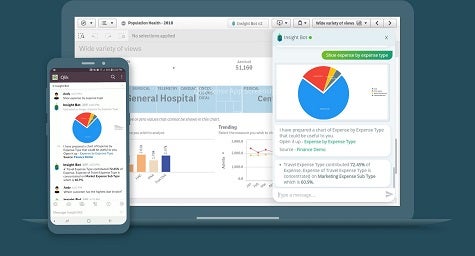At a Qonnections 2019 conference, Qlik announced it is now employing a microservices-based architecture based on Kubernetes container orchestration software that makes it possible for organizations to deploy the various modules of the company’s analytics software portfolio anywhere they see fit under the terms of a single application license.
James Fisher, senior vice president of strategic marketing for Qlik, says that rather than forcing customers to commit to a specific cloud or on-premises deployment, Qlik Sense Enterprise gives organizations the flexibility to deploy modules based on either the amount of data they need to analyze or compliance requirements they require data to remain within in an on-premises IT environment.
“We don’t care where you deploy,” says Fisher.
At the same time, Qlik also committed to delivering a Qlik Sense June 2019 release that will include additional augmented intelligence capabilities, including expanded natural language search capabilities within Insight Advisor and the ability to import “precedent-based learnings” directly into Qlik Cloud Services.
Other forthcoming capabilities include a suite of Qlik Sense SaaS products for groups and teams, with seamless, direct connections via the cloud to additional applications such as Salesforce and SAP, a Qlik Sense Mobile for BlackBerry client, and a containerized version of Qlik Sense Mobile for BlackBerry Dynamics enterprise mobile management (EMM) platform as well as support for the EMM platform from Mobile Iron.
Qlik is also working on smoothing the transition to Qlik Sense from its previous generation of Qlik View data visualization tools under a single licensing scheme that makes it possible to access applications on both platforms. Qlik is also now providing access to Qlik View applications via Qlik cloud.
At the same time, Qlik reiterated its commitment to expanding the Associative Insights capability it provides within Intelligence Advisor via a Qlik Associative Engine, which is the machine learning engine that Qlik added to its application portfolio last year. The Associative Insights capability extends the AI engine to suggest hidden insights in data in a way that serves to augment the end user, says Fisher.
Competition between providers of analytics applications has never been fiercer. The challenge organizations face now isn’t necessarily figuring out how to visualize their data, but rather determining which platform might best help them ask the right questions in the first place.



